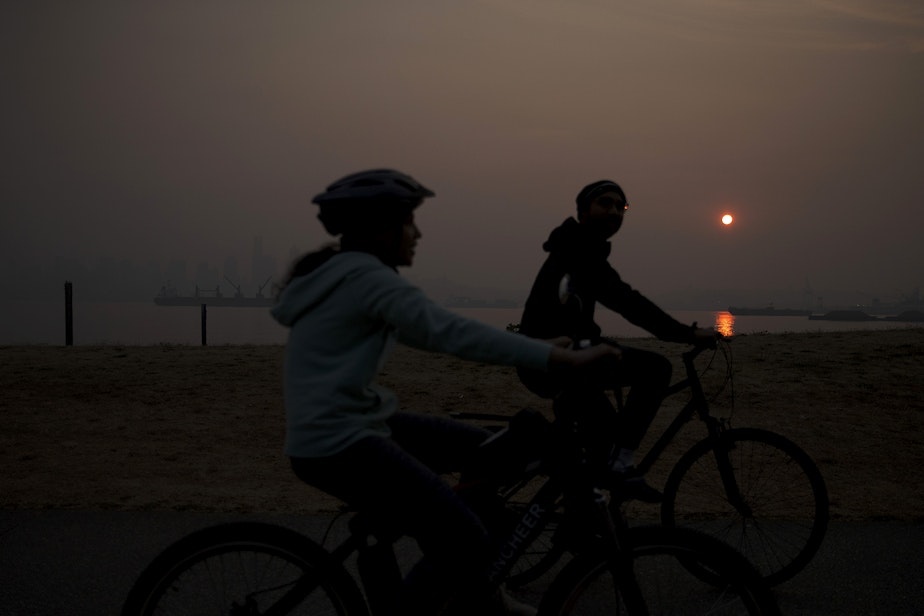Another smoky summer could be on Washington's horizon

Record-breaking rainfall drenched Seattle and Olympia on Sunday. Even with the wet weather and snowpack in the Cascades about 40% deeper than normal for this time of year, western Washington could be in for a smoky summer from forest fires.
Much of eastern Washington and most of the western United States are experiencing severe droughts, priming forests and grasslands there for wildfires.
Last summer, western Washington got hit with wildfire smoke from almost every direction, with most of the smoke coming from beyond the state’s borders, according to the Puget Sound Clean Air Agency.
“It was really just a giant blob of smoke from all over California and Oregon,” Puget Sound Clean Air Agency scientist Phil Swartzendruber said.
Though fire severity is hard to forecast, the current tinder-dry conditions in much of the West leave the Seattle area ripe for a repeat.
“I would say Northern California is the area to watch now because it's extremely dry," said Dan Jaffe, an atmospheric scientist at the University of Washington–Bothell. "It’s pretty common that we get smoke coming out of Northern California and Oregon.”
Smoke from out-of-state and in-state wildfires has led to days, even weeks, of hazardous air quality, prompting many to stay indoors during a season when many aim to be outside.
Skies are unlikely to get very smoky in western Washington before August and September.
Fire season in the West has lengthened, thanks in part to temperatures driven higher by climate change.
“As it gets warmer, we have more drought conditions, and we're drying the fuel out more,” Jaffe said.
Decades of wildfire suppression also means there’s more unburnt fuel available for fires to consume, while rural and second-home sprawl in wooded areas makes fires more destructive and more difficult to fight.
Smoke experts say now is the time to buy or make a simple smoke-filtering fan for your home.
“Sometimes those filters can be hard to get when there's word that a smoke plume is headed our way,” Swartzendruber said. “So you want to have those ahead of time.”
“You don't have to spend a lot of money to actually do a pretty good job of protecting your indoor air quality,” Jaffe said.
Some face masks that stop the spread of Covid-19 might also come in handy during smoke season.
While N95 and some other masks can block the microscopic particulates in smoke that might otherwise lodge deep in your lungs, Jaffe warned that many cloth masks will be ineffective at filtering smoke unless their fibers and fit on your face are both tight enough.




